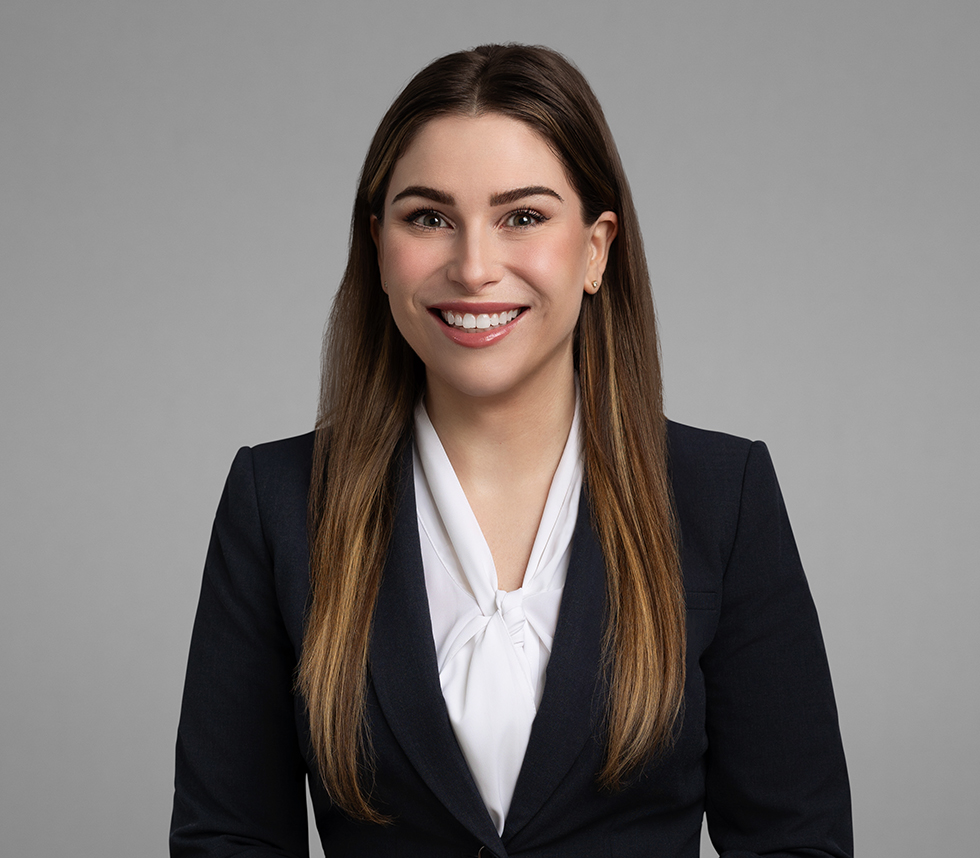
Defining Complex Litigation Services (Part 1) – What You Need and Why
For our next multi-part blog series, we are going to dig into the world of complex litigation services and focus on whether it is possible to build an alternative model in the legal services marketplace that keeps quality high while disrupting market pricing. The question we are focusing on is: can a law firm provide the same quality service at a materially lower price point?
In this post we will focus on what it is that companies are buying when they purchase complex litigation services. Without some common basis from which to define these services, it becomes difficult to truly analyze any given firm as to whether they can deliver those services.
The discussion will proceed in two ways. First, we will provide some definition as to what complex litigation “is” – i.e., what would define a “complex case”?
Second, we will define the services needed for that case. We will do so by focusing on the typical roles on any given complex litigation team. The reason is that, generally and where the fee is by the billable hour, clients pay for the people who then spend time on their case. In a billable hour context, clients generally do not pay flat fees for the specific items themselves (e.g., a client does not pay a flat fee by the document request). While fee-for-service can be a powerful model, it is outside of the scope of this series.
Finally, one housekeeping note: there are other critical components of a high-quality service, e.g., responsiveness, personality fit, communication skills, unique knowledge of a specific judge, deep industry experience or understanding of a specific client’s strategic goals, and the like. These are significant, and often dispositive, hiring factors. We will have more to say on these attributes, but they are outside the scope of this series.
Let us dig in.
Complex Litigation – Defined
When we talk about “complex litigation,” what do we mean?
A typical complex case often will have the following features: (i) significant procedural, substantive, or factual complexity (e.g., present novel questions of law, or present highly technical factual issues) and (ii) present significant exposure to the client (e.g., millions or more at stake, risk a product line, have significant reputational risk). These cases tend to require high-end thinking and persuasion. And the cases tend to have highly skilled lawyers on the opposing side.
Here are a few examples: a patent infringement case in the Eastern District of Texas between two publicly traded competitors; a breach of fiduciary duty dispute implicating tens of millions of dollars pending in Delaware; a major securities class action pending in California; a products liability MDL pending in Chicago with dozens of cases spread around the country; a trade secret dispute in Colorado.
When a client is faced with such a case, they turn to law firms that can provide complex litigation services.
But what are those services? And how can a client begin to build a framework for thinking about how a given firm might be capable of providing the services that they need?
To answer this question, we draw on our industry experience—Hilgers Graben attorneys have collectively worked hundreds of years in Big Law litigation environments—as well as our firm’s own caseload, what we hear from larger clients we serve, and what we observe generally in the legal services industry.
In a billable hour fee arrangement, which still is the predominant billing arrangement today, clients are buying the time of a team of lawyers and personnel.
So to understand complex litigation services, we will focus on the roles on a typical team.
Complex Litigation Services – Defining Roles
Lead Trial Lawyer
A critical starting point is a sophisticated and persuasive lead trial lawyer. This person tends to have at least three key attributes.
First, they have end-to-end litigation experience, i.e., understand every stage of the case, up to and including trial, along with any necessary appeals post-trial. These lead trial lawyers have been to trial before and know what the puzzle looks like, and how the different pieces fit together. Without this experience, critical issues may be hidden and can be missed.
Second, they have sound strategic judgment. They understand the importance of negotiating strong protective orders or ESI orders for e-discovery, know how to set the stage for a persuasive summary judgment, when to push discovery disputes and when not to, and the like.
Third, they have elite persuasive abilities. They know how to put together a convincing case in front of a judge, jury, or arbitrator, and they have the confidence and communication skills to deliver the client’s side of the case when that time comes.
The lead trial lawyer is a necessary piece – but not the only piece – needed for a complex case. Complex cases pose practical problems—often cases have too much work for one person to handle on their own even if they focused all of their energies on just that case (which would be rare as top-flight lead trial lawyers are in such high demand that they must balance multiple ongoing cases). There is also an efficiency problem—lead trial lawyers have the highest billable rates, and, for example, their highest and best use is not drafting interrogatory answers.
This creates the need for another role on a typical trial team—the second-in-command.
Junior Partner / Senior Associate (Second-in-Command)
This second-in-command—often a junior partner or a senior associate, is someone who knows what to do with a case on a daily basis to move the ball forward. They keep an eye on deadlines, peer around corners, identify issues that might arise down the road, and are able to keep the trains moving day after day. They are experts in all of the facts of the case and have a strong working relationship with the lead trial lawyer (and have the strategic judgment to raise appropriate issues for the lead attorney’s consideration). And while they do not necessarily need to have trial experience to see the case to a conclusion, they tend to have the technical expertise across the lifecycle of a complex litigation dispute. For example, they know how to serve subpoenas, take or defend a fact deposition, prepare a witness, perform custodial interviews, understand the rhythm of a case’s progress, and handle meet and confer conferences with opposing counsel.
Often two teammates are not enough. Any given large case may involve dozens of document custodians, hundreds of document requests, dozens of interrogatories, dozens of depositions, and numerous pleadings, motions, briefs, and subpoenas.
To get help, teams often turn to associates.
Associates
The backbone of the supply chain pipeline in a complex case is an associate. Associates, who range from brand new junior associates to senior associates, research discrete legal issues, complete initial drafts of pleadings, discovery documents, and letters, take notes at meetings, monitor deadlines, and assist with a significant amount of the substantive day to day work that is a critical component of litigation.
These associates, like the other members on the team, need the intellectual horsepower to think through difficult issues. While some of these associates are not fully trained and/or experienced in all the technical aspects of litigation, they all bring top-end critical thinking and writing skills, attention to detail, and a proactive approach to the case. When supervised by a talented manager, associates can perform an essential role ensuring that the work in a case gets done, done right, and done on time.
Rounding out the litigation teams are the people who make everything work in the background—paralegals.
Paralegals
Outstanding paralegals are the glue that holds together any complex case. Paralegals perform a host of important tasks that include calendaring deadlines, organizing case files, filing pleadings with the court, and serving discovery. Have an emergency filing that needs to be completed at 8 pm on a Friday night? A seasoned paralegal will ensure that filing is done correctly without missing the deadline, accidentally filing confidential client documents in a public way, or making other errors that can be catastrophic to the outcome of the litigation.
A core team will include a lead trial lawyer, second-in-command, associates, and paralegals.
In today’s era of electronically stored information—with massive databases, sophisticated file types, complicated technology, and varied sources of data—a typical case will require an additional set of teammates to handle the electronic discovery. These teammates are discovery experts who range from litigation support specialists to discovery counsel.
Discovery Roles — Litigation Support and Discovery Attorneys
The last piece of a well-rounded team is the discovery support team. Handling discovery tasks is critical. A typical complex case will have significant discovery needs. A common example would be for a client to collect, host/process on an electronic platform, review, and produce 100,000 documents in 30-60 days. Your complex litigation team should be equipped to handle these steps.
Who are the individuals comprising these discovery roles?
First, the discovery roles include e-discovery/litigation support specialists. With the growing complexity of data sources, the source (e.g., Slack, Teams, ephemeral messaging, and the like), volume (often in the terabytes), and the location (spread across innumerable shared drives, computers, and phones) of records make complex litigation even more challenging. Having a proactive litigation support specialist who is an expert in data issues as part of the team pays enormous dividends to the client.
Second, the discovery roles include a discovery review team. Reviewing 100,000 documents, as an example, is an enormous challenge that often must be tackled by a dedicated team. These experts in discovery must have the technical aptitude to deftly operate e-discovery review software (e.g., Relativity), and have the legal minds to make nuanced responsiveness and privileged calls on documents.
Defining the roles is one thing; determining how many of each such person you might need on a case is the next challenge that feeds into any hiring decision.
That is what we discuss next.
Complex Litigation Services – Determining Capacity
Supply capacity is as critical a component in providing complex litigation services as supply chain capacity is for product development. You need to have enough of what you need.
What kind of capacity constraints do we hear about?
First, you must have a litigation firm with the litigation team capacity to efficiently handle large litigation needs. While in some cases a lead trial lawyer along with an associate or two will be sufficient, many cases (or at least during certain stages of those cases) demand a much bigger litigation team. Have multiple depositions going on around the country in a given week? Have a major subpoena campaign that needs to be managed while handling a couple of dozen custodial interviews? Have discovery hearings while working through claim charts or preparing experts and reports? All of these tasks can easily swamp a small litigation team of just a handful of lawyers, especially as they often all happen at once. When this occurs, the team must be able to expand to a dozen or more litigators to handle all aspects of the case.
Second, and relatedly, you often need the discovery surge capacity to handle major discovery needs. In modern litigation, discovery can swamp even large teams of senior associates. The 100,000-document example above—not uncommon for complex cases—is an enormous undertaking. As another example, consider the need for a client to produce a 4,000-entry privilege log compiled and prepared within the deadlines of an ESI order? Discovery-related tasks like these can quickly become too much even for a larger team of litigators; you may need 20, 30, or more discovery-focused attorneys to work through all the discovery needs of a case.
Third, you often need geographic capacity, i.e., national reach. Complex litigation cases can be filed anywhere or can have national discovery implications. Have a case pending in the Eastern District of Texas, but need to serve subpoenas in Pennsylvania, Florida, Delaware, and Nebraska? National reach helps. Have depositions in California on a commercial dispute pending in Missouri? Having lawyers on the ground around the country gives your legal team options to handle these issues.
It is difficult to overstate the downside impact of not having this capacity if it is needed. The result is often missed deadlines, massive downgrades in quality from a stretched/overmatched team, and the negative repercussions of poorly completed document productions.
Lack of capacity impacts a litigant’s ability to go on offense. For example, seizing the initiative to develop a strategic subpoena campaign that might really tie a case together, engaging in the careful offensive review of the other side’s production, or constructing a timeline with nuance and clarity while raising the critical questions for depositions and trial, may all be important pieces to develop a winning case. But often they are not required, and thus can fall further down the priority list when there is competition for resources. Without the manpower, offensive strategies like these are often left unexecuted on the war room whiteboard.
In some cases, a client knows upfront that it will need massive resources to handle the dispute. For a major products liability MDL or a significant antitrust action, for example, the answer to “how many lawyers” is something like “a whole bunch!”
Of course, not every case needs this number of lawyers – especially when efficiency is maximized – but it is not always apparent at the outset of the case whether such large numbers are required. Some cases start out really small, and after five or six months they take a dramatic turn in complexity and scope, requiring a major expansion of the trial team.
The point is this: when clients hire a law firm for complex cases, they may not know that they need the capacity for a dramatic expansion, but they want to make sure the ability to expand capacity if needed is there.
***
In our next post in this series on complex litigation, we will explore the different options available to clients in the legal marketplace and assess how each option solves (or does not solve) the needs set out above.




















